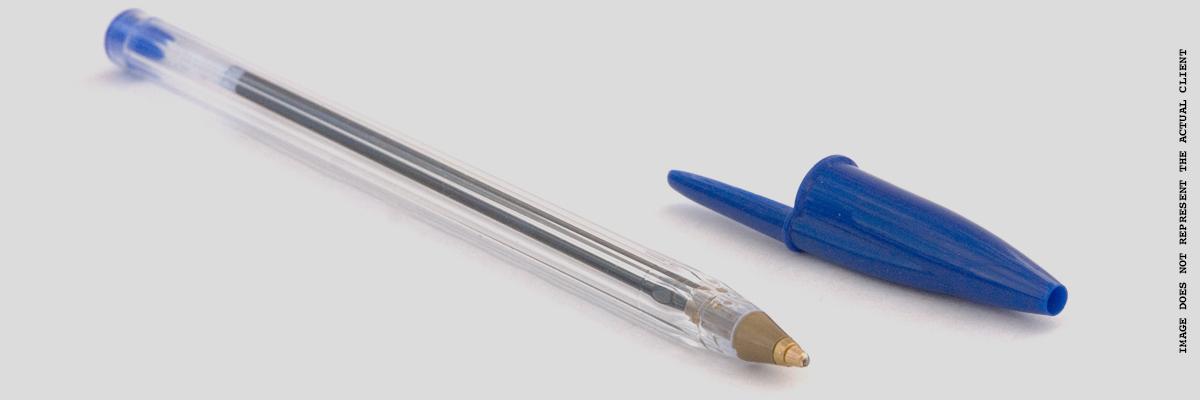Truth in Advertising Claim
ISSUE
A writing instrument manufacturer (A) claimed to reduce writing stress by a certain percentage.
METHOD
One of their competitors (B) did not believe the claims and asked for an experiment to be conducted to determine what, if any, writing stress levels were induced. First writing stress had to be defined quantitatively as this was missing on their packaging and as part of the discover process scientific papers were produced which allowed us to define writing stress. Writing stress was defined by a number of measures, but one of the most important was the ratio of pen point stress, the amount of pressure one exerts on a writing surface, to the amount of muscle activity, as measured by surface electromyography (semg) required to exert that force. In addition and as a control measure a goniometer that measures wrist joint motion was utilized to ensure that wrist motions between trials were similar. Six (6) different writing instruments were tested including the one by (A) and one by (B). The order of pen testing was randomized. A piece of cardboard that was the same thickness of the pressure sensing surfaces was utilized and it was cut out so that these sensing surfaces could be embedded in the cardboard and then covered with two sheets of paper to hide their location from the subjects. Each subject had to write a standard paragraph in script on a piece of paper that was placed on top of these two pieces of paper and the cardboard with embedded pressure sensors. Each subjects writing hand had an electric goniometer on the wrist joint as well as (semg) sensors for the thumb, finger and wrist muscles. This allowed us to measure muscle activity as a ratio to pen point pressure at multiple locations on the paper. An equal number of men and woman with no pre-existing upper extremity musculoskeletal disorder participated in the study.
RESULT
There was no difference in the ratio of pen point pressure to muscle activity between any of the pens. Company (A) protested the results and said they were not as scientific as the data they relied on. Company (A) submitted a copy of a paper that was published in a Japanese journal who’s abstract listed a writing instrument with a similar diameter as company (A) writing instrument as reducing writing stress by the amount company (A) claimed. Company (A) only provided the paper with the abstract translated into English and whether or not they read the whole paper or chose not to provide it, the whole paper was translated. The major finding of the translation was that the reduction in writing stress that was found was for only those individuals who were already injured or had a pre-existing condition – they like us, found no difference in pen diameter and a health population. Company (A) agreed to change their packaging and television commercials.

